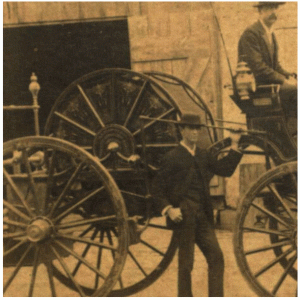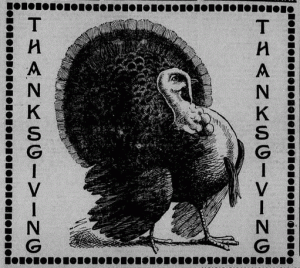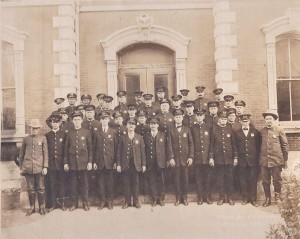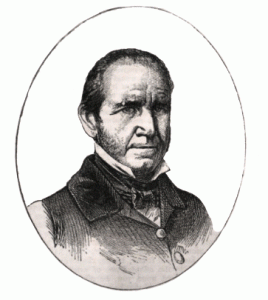Even before Houston became a city, in name at least, by obtaining a charter, steps were taken to organize a fire company.

Houston's Station 3 Fire Company, cira 1889
In 1836, Protection Fire Company No. 1 was organized. That was perhaps the first organization of the kind in Texas. They had no engine or anything with which to fight fire, except buckets, and their method was a primitive one of forming a line and passing the buckets from hand to hand. As crude as this method was, much good was accomplished, because executed by an organized force rather than an excited mob.
Protection Company No. 1 preserved its organization and identity, until the old volunteer department was absorbed by the city and became the present day department. In the early fifties this company bought its first engine. It was an old-fashioned hand engine, but at that day was looked upon as a grand affair. It was a vast improvement on buckets, at any rate, and did a great deal of good work.
Houston was growing rapidly at that time and the demand for better fire protection was becoming more apparent each day. The whole city being constructed of wood, and the houses, in the business part of the town, being jumbled close together, the fire risk became very great. The imperative need of better protection was accentuated in 1858-59 by the occurrence of two great fires, one sweeping away the block bounded by Main, Franklin, Travis and Congress Streets and the other, the block bounded by Main, Congress, Travis and Preston Streets. In addition to these there was another big fire that destroyed a number of buildings on both sides of Main Street between Texas Avenue and Capitol Avenue.
In 1860, the warehouse of T. W. Whitmarsh, containing 2,100 bales of cotton, was burned. When the first of these great fires occurred, a number of young men met and formed Houston Hook and Ladder Company No. 1. This company was organized April 17, 1858. Its first officers were: Foreman, Frank Fabj; 1st assistant, E. L. Bremond; 2nd assistant, O. J. Conklin; president, Henry Sampson; vice-president, Fred A. Rice; secretary, Wm. M. Thompson; treasurer, S. H. Skiff. The charter members were: J. C. Baldwin, C. A. Darling, Frank H. Bailey, I. C. Stafford, Ed. Riodan, R. W. Bowling, Pete Schwander, Paul Schwander, George A. Peck, W. S. Owens, Charles Nordhausen, John S. Hirshfield, J. L. Talman, R. B. Wilson, J. D. McNulty and John W. Clark. The company entered at once into active service and accomplished great good through their well-directed and intelligent efforts.
To learn more about Houston’s Early Fire Company join the HoustonHistory.com Community!










